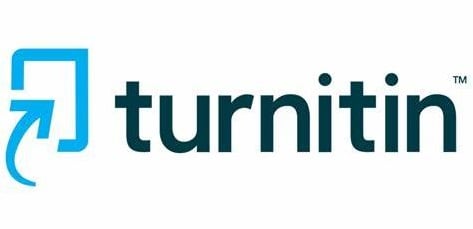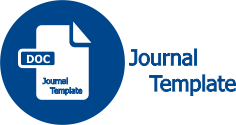Analisis Kemampuan Berpikir Kritis Siswa dalam Menyelesaikan Masalah Materi Program Linear Ditinjau dari Gaya Kognitif Field-Dependent dan Field-Independent
DOI:
https://doi.org/10.33752/discovery.v9i2.6926Keywords:
Critical thinking skills, linear programming, cognitive styleAbstract
The aim of this research is to describe students' critical thinking abilities in solving problems with linear programming material in terms of Field-Dependent and Field-Independent cognitive styles. The type of research used is descriptive research with a qualitative approach. The research instruments used in this research include the cognitive style test (GEFT test), critical thinking ability test, and interview guide. The subjects used in this research were 4 students taken from class XI of Dewantoro Purwosari Vocational School. According to the results of the GEFT test that was carried out, the subject was 2 students with a Field- Dependent cognitive style and 2 students with a Field-Independent cognitive style. The information retrieval techniques used in this research are the GEFT test, critical thinking ability test, and interview guide. Next, the data collection technique used is reducing data, presenting data and drawing conclusions. At the stage of checking the validity of the data, this research used triangulation techniques, namely tests and interviews. The results of this research state that students who have a Field-Dependent cognitive style have quite high critical thinking abilities. And able to fulfill 3 indicators of critical thinking ability including the analysis stage, evaluation stage and inference stage (conclusion). Meanwhile, the subject interpretation stage FD1 is classified as sufficient, while FD2 is classified as not yet sufficient. Meanwhile, students who have a Field- Independent cognitive style have high critical thinking abilities. And able to fulfill 4 indicators of critical thinking ability including the interpretation stage, analysis stage, evaluation stage and inference stage (conclusion).
Downloads
References
Akbar, A. H. (2024). Peningkatan Pemahaman Siswa pada Materi Klasifikasi Makhluk Hidup melalui Model Cooperative Learning Tipe Jigsaw di MTs Negeri 8 Kebumen. Discovery : Jurnal Ilmu Pengetahuan, 9(1), 8–16. https://doi.org/https://doi.org/10.33752/discovery.v9i1.5810
Adnyana, Gede Putra. 2012. “Keterampilan Berpikir Kritis Dan Pemahaman Konsep Siswa Pada Model Siklus Belajar Hipotetis Deduktif.” Jurnal Pendidikan dan Pengajaran 45(3): 201–9.https://ejournal.undiksha.ac.id/index.php/JPP/article/view/1833/1603.
Arigawati, N. H. (2022). Berpikir Kritis Siswa Ditinjau Dari Gender Dan Gaya Kognitif Field Dependent Dan Field Independent Materi AljabarSiswa Smp Universitas Pendidikan Indonesia repository.upi.edu | perpustakaan.upi.edu. 1–12.
As’ari, A. R., Tohir, M., Valentino, E.,Imron, Z., & Taufiq, I. (2017). Matematika Untuk SMP/MTs Kelas VII Semester 1. In Sereal Untuk (Vol. 51, Issue 1).
Darma, A. N. (2013). Proses berpikir siswa sma dalam field independent dan field dependent. Pedagogia, 2(1), 71–83.
Facione, P. A. (2020). Advancing thingking worldwide. In Insight assessment: Vol. XXVIII (Issue 1). http://www.insightassessment.com/pd f_files/what&why2007.pd%0Ahttp:// www.eduteka.org/PensamientoCriti coFacione.php.
Facione, P. A. (2020). Critical thinking : What it is and why it counts. In Insight assessment: Vol. XXVIII (Issue 1). Milbrae: California Academic Press. http://www.insightassessment.com/pdf_files/what&why2007.pd%0Ahttp://www.eduteka.org/PensamientoCriticoFacione.php
Fikri, F. N., Mardiayan, & Kuswardi, Y. (2017). Analisis Kemampuan Berpikir Kritis dalam Pemecahan Masalah Matematika Berdasarkan Langkah- Langkah Facione pada Materi Program Linear Ditinjau dari Minat Belajar Siswa Kelas XI MAN Purwodadi. Jurnal Pendidikan Matematika Dan Matematika (JPMM), 1(2), 56. http://dissertation.laerd.com/purposiv e-sampling.php#types
Kowiyah. (2012). Kemampuan Berpikir Kritis. Jurnal Pendidikan Dasar, 3(5), 175–179.
Marzuki, Wahyudin, Cahya, E., & Juandi, D. (2021). Students’ critical thinking skills in solving mathematical problems; a systematic procedure of grounded theory study. International Journal of Instruction, 14(4), 529–548. https://doi.org/10.29333/iji.2021.14431a
Norman, M., Chang, P., & Prieto, L. (2017). Stimulating critical thinking in U.S business students through the inclusion of international students. The Journal of Business Diversity, 17(1), 122–130
Oktaviani, N. (2017). Analisis faktor- faktor yang mempengaruhi hasil belajar matematika (studi komparatif pada siswa kelas X di SMA Negeri 3 Palopo). Skripsi, 13(April), 15– 38.
Oktaviani, U., Kumawati, S., Apriliyani, M. N., Nugroho, H., & Susanti, E. (2020). Identifikasi Faktor Penyebab Rendahnya Hasil Belajar Matematika Peserta Didik di SMK Negeri 1 Tonjong. MATH LOCUS: Jurnal Riset dan Inovasi Pendidikan Matematika, 1(1), 1–6. https://doi.org/10.31002/mathlocus.v 1i1.892
Pratiwi, D. P. (2020). Analisis Kemampuan Berfikir Kritis Dalam Memecahkan Masalah Sistem Persamaan Linear Satu Variabel Ditinjau Dari Gaya Kognitif Siswa. Jurnal Pendidikan Edutama, 11(2), 1–11.
Ratnasari, & Nurvicalesti, N. (2022). Analisis Kemampuan Berpikir Kritis Siswa dalam Menyelesaikan Soal Cerita Ditinjau dari Kemampuan Matematis dan Gender. Jurnal Inovasi Edukasi, 5(2), 14–18. https://doi.org/10.35141/jie.v5i2. 363
Rahman, A., Munandar, S. A., Fitriani, A., Karlina, Y., & Yumriani. (2022). Pengertian Pendidikan, Ilmu Pendidikan dan Unsur-Unsur Pendidikan. Al Urwatul Wutsqa: Kajian Pendidikan Islam, 2(1), 1–8.
Rijali, A. (2018). Analisis Data Kualitatif Ahmad Rijali UIN Antasari Banjarmasin. Jurnal Alhadharah, 17(33), 81–95.
Saputra, H. (2020). “ Kemampuan Berfikir Kritis Matematis .” April, 1– 7.
Sari, N. A. P., M. U. Albab, N. Ilmayasinta., (2023). Pengaruh model pembelajaran problem based learning melalui pendekatan saintifik pada materi bangun datar untuk meningkatkan hasil belajar siswa. Jurnal Discovery 8 (2), 75-80.
Sarwanto, Fajari, L. E. W., & Chumdari. (2020). Open-ended questions to assess critical-thinking skills in indonesian elementary school. International Journal of Instruction, 14(1), 615–630. https://doi.org/10.29333/IJI.2021.14137A
Simbolon, M., Surya, E., & Syahputra, E. (2017). The Efforts to Improving the Mathematical Critical Thinking Student ’ s Ability through Problem Solving Learning Strategy by Using Macromedia Flash. American Journal of Educational Research, 5(7), 725–731.
Sudibyo, A. (2022). Analisis kelemahan berfikir kritis siswa smk annihayah dalam berpendapat. 1(3).
Wijaya, A. P. (2007). Gaya kognitif field dependent dan tingkat pemahaman konsep matematis antara pembelajaran langsung dan stad.
Wulandari, W., & Warmi, A. (2022). Kemampuan Berpikir Kritis Siswa Dalam Menyelesaikan Soal Pisa Konten Change and Relationship Dan Quantity. Teorema: Teori Dan Riset Matematika, 7(2), 439. https://doi.org/10.25157/teorema.v7i2.7233
Zamrodah, Y. (2016). Pelaksanaan Pendidikan Akhlak di SMP Islam Terpadu Daarut Tahfidz Karangasem Sayung Demak.15(2),1–23.
Downloads
Published
How to Cite
Issue
Section
License
Copyright (c) 2024 Solikhati zahro, Zainullah Zuhri

This work is licensed under a Creative Commons Attribution-ShareAlike 4.0 International License.

















